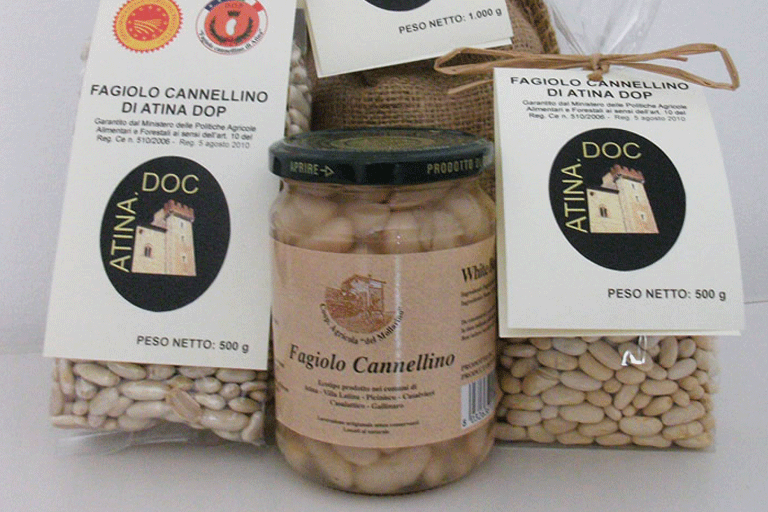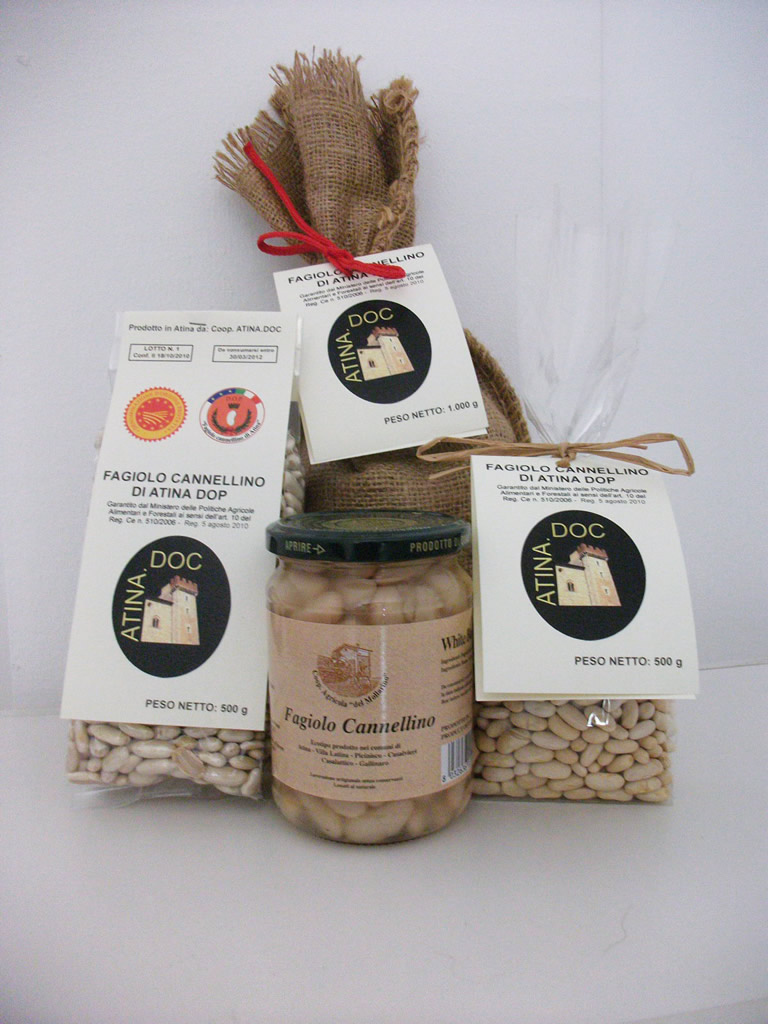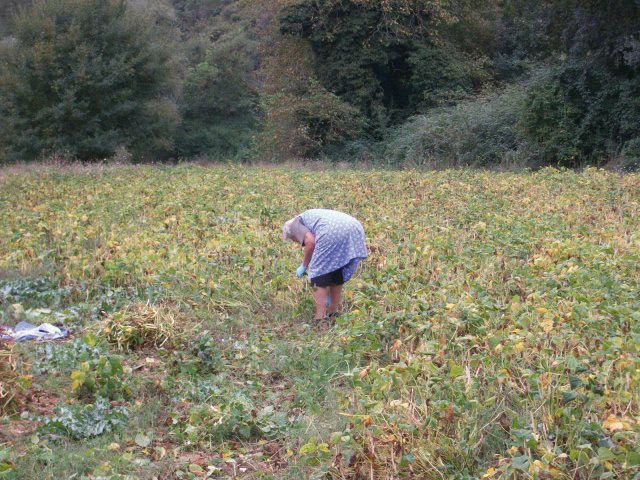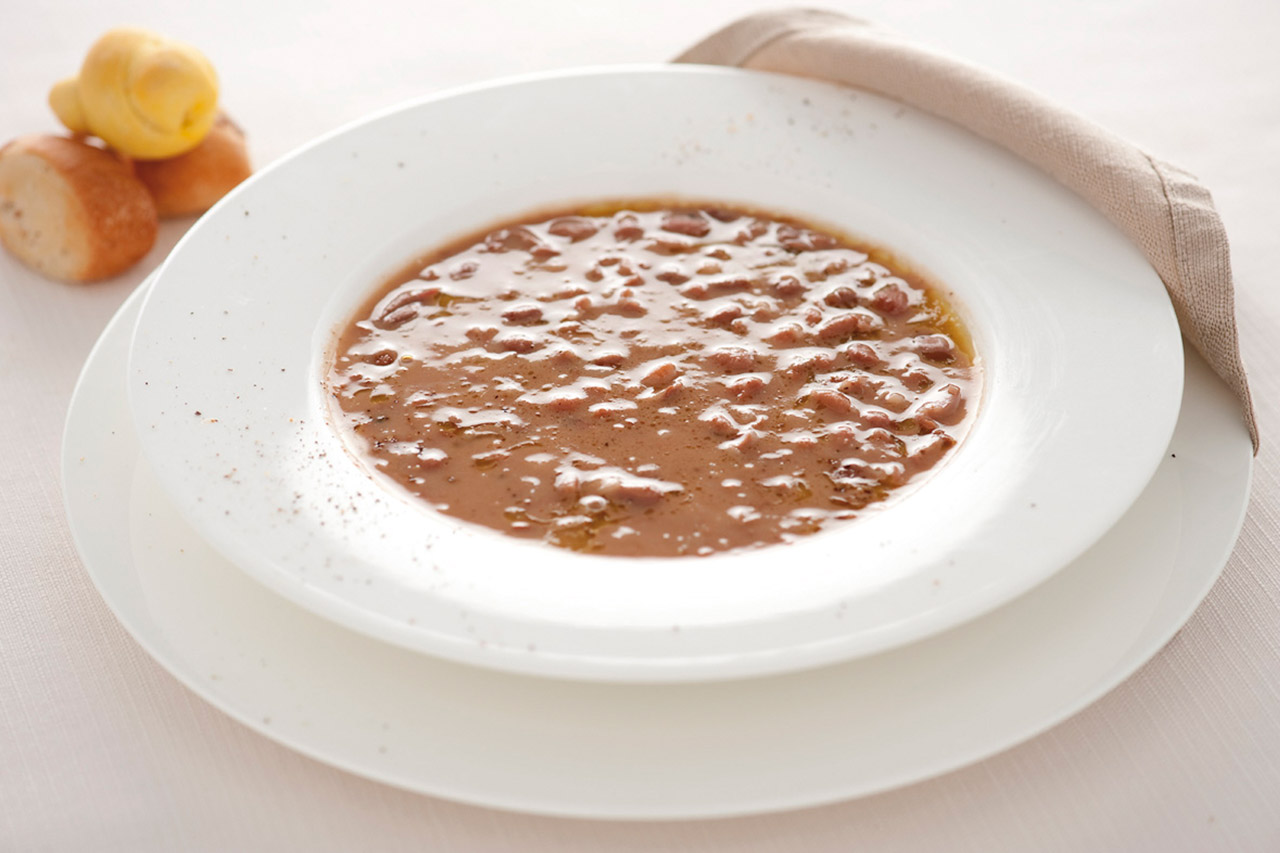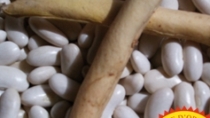Description
The Fagiolo Cannellino di Atina PDO refers to the dry bean belonging to the species Phaseulus vulgaris L., deriving from the local Cannellino di Atina ecotype.
Production Area
The production area of Fagiolo Cannellino di Atina PDO is within the municipalities of Atina, Villa Latina, Picinisco, Casalvieri, Casalattico and Gallinaro in the Province of Frosinone, in the Lazio region.
Production Method
Sowing is carried out by hand or with a seeding machine between June 15th and July 15th, distributing 70-90 kg of seeds per hectare. The first irrigation is extremely important for the success of the cultivation. It involves waiting for each plant to visually wilt before proceeding with watering (two hours after sunset); this is to prevent the plants from growing excessively. Every 6-10 days, water from the River Melfa, the Mollarino torrent and their tributaries is used to irrigate by means of flooding, spray or drip irrigation. The Fagiolo Cannellino di Atina PDO crops must not be fertilised. The plants are harvested between September 10th and October 30th, and have to be dried within 45 days in sheltered or open areas; this is followed by threshing. Finally, the impurities and defected beans are eliminated by manual or mechanical selection.
Appearance and Flavour
Fagiolo Cannellino di Atina PDO is kidney shaped, slightly elliptic and flattened. The seed coat is thin and an off-white colour; it is 9 mm to 1.4 cm long and 5 to 6 mm wide. After cooking it is tender and deliquescent on the palate.
History
Fagiolo Cannellino di Atina PDO was defined as a "product of excellent quality" as early as 1811, in the Statistics of the Kingdom of Naples, testifying to its importance in local society. Filippo Cirelli also supplied important data on its production in Il Regno delle due Sicilie descritto ed illustrato, 1853. These beans were used by farming families, who cooked them in a pignata (a local cooking pot) with a little oil, as a complete meal. They were not only destined to be sold for family consumption: it was tradition to offer them as a prestigious gift to friends and relatives, as confirmed by registrations in the Mastri books (local registers). From an economic viewpoint, the cultivation of Fagiolo Cannellino di Atina PDO has represented one of the largest sources of income in the valley, and its designation has now become part of common and business language, as well as the focal point of conventions and press releases.
Gastronomy
Fagiolo Cannellino di Atina PDO is best stored in a cool, dry place in order to preserve its specific properties. Once opened, the beans should be stored in food-grade jars with a watertight cap, away from light and heat sources; in summer they are best kept in the refrigerator. Fagiolo Cannellino di Atina PDO should be eaten after cooking and does not need to be soaked beforehand. It is the basic ingredient of many local recipes, such as white bean pappafuocchie, with extra virgin olive oil, flour, water, salt, garlic, onion, celery, tomato sauce and chilli pepper, or the simpler faffocchi e fagioli, made with beans, flour, water, salt, extra virgin olive oil, garlic and chili pepper.
Marketing
The product is marketed as Fagiolo Cannellino di Atina PDO. They can be sold in bags of 250 g to 5 kg and trays of 250 g to 3 kg, also vacuum-packed.
Distinctive Features
Fagiolo Cannellino di Atina PDO is extremely tender and deliquescent on the palate, thanks to the production area’s climate and soil composition.






